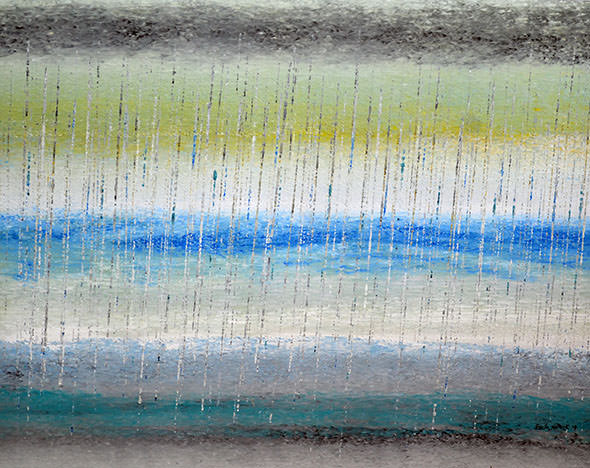
It is with great excitement that we introduce a new stable of artists to Kate Owen Gallery with our inaugural exhibition, Lockhart River Mob.
The artists come from Sandbeach Culture and Community; five distinct clan groups that live in one of the most precious natural environments on the east coast of Far North Queensland. Here you will find the healthiest section of the Great Barrier Reef, mangroves and river systems that pattern the coastal region, rainforest, red dirt roads and rock art.
In many of the artists’ work you can see how they use their detailed and graphic knowledge of the local flora, fauna and landscape and interpret it as an aesthetic pattern; using line, tone and texture to create expressionistic and abstract works that convey the character and sense of their country, with an elevated sense of mood and emotion.

What is remarkable about this exhibition is the diversity of styles, and yet the artworks always circle back to the identity of Sandbeach community; intertwining art and tradition as a cultural and personal expression from the artists own unique perspectives.
The unique context that formed the backdrop for the genesis of art from this region helps explain the diversity of styles. The Lockhart River Art movement is a distinctly 21st century approach to cultural and environmental expression, created by a new generation of artists. The founding Lockhart River artists are known as ‘The Art Gang’ – a group of young people who did not have the same responsibility of inherited iconography of traditional visual culture, passed down to contemporary artists. Instead, art making in Lockhart was a learning process before anything else; embedded in educational and vocational opportunities for children.
Elders encouraged any efforts to keep culture strong while expanding vocational potential and, in many instances, artists were learning cultural traditions, sometimes for the first time, at the same time as they were learning their craft. In this regard the artists and their art were in a constant state of transformation; they were taking the old ways and transforming them into new ways.
Broad community support for the education and advancement of young people in ways that once would have been considered culturally inappropriate helps explain how the Lockhart Gang broke through inside and outside their community with their new and original approach. Regardless of how one seeks to explain it, the artworks from the five artists in this exhibition speak for themselves and for a community willing to embrace something different, interesting, fresh and bold.
Lockhart River Mob introduces the exciting, confident and vigorous art from five superstars of the Lockhart River
ONLINE EXHIBITION will be live from 18 March
ROSELLA NAMOK
 Rosella was the first Lockhart River artist to have a solo show, at Hogarth Galleries in 1999, and since then has had regular exhibitions in Melbourne, Brisbane and Sydney.
Rosella was the first Lockhart River artist to have a solo show, at Hogarth Galleries in 1999, and since then has had regular exhibitions in Melbourne, Brisbane and Sydney.
Rosella’s depictions of the monsoonal rains in her tropical homeland may be the most representational in her abstract oeuvre, but they also capture the psychological impact of the downpour; from the joyous light misty rain to the dense engulfing deluge.
In Early Shower Rain, we can also see the influence of Rosella’s silk-screen background – the pull of carefully selected colours suggest the form of the landscape and allows for a certain degree of relaxed contemplation in her imagery.
In Old Girls... Yarn at Night Time, Rosella paints with her fingers, an adaptation of the way that women elders pull their fingers through the sand while yarning. Each panel has a character of its own, and yet they have a tonal and formal coherence. One feels impelled to read each panel as one of the group of women who gather to yarn about their life and the community and to pass on knowledge to the younger generation.
Another preoccupation in Rosella’s body of work are her clan artworks – where she uses line and circle to express the complex kinship systems in Sandbeach. She takes the complexities and dynamics of everyday life as her inspiration and represents them in a visual abstraction that effectively maintains the essential idea.
Rosella’s works are currently held in private and public collections both nationally and internationally including the Art Gallery of New South Wales, Sydney, National Gallery of Australia, Canberra, The Kluge-Ruhe Aboriginal Art Collection of the University of Virginia, Charlottesville, Virginia, USA and Columbus State University, Georgia, USA.
FIONA OMEENYO
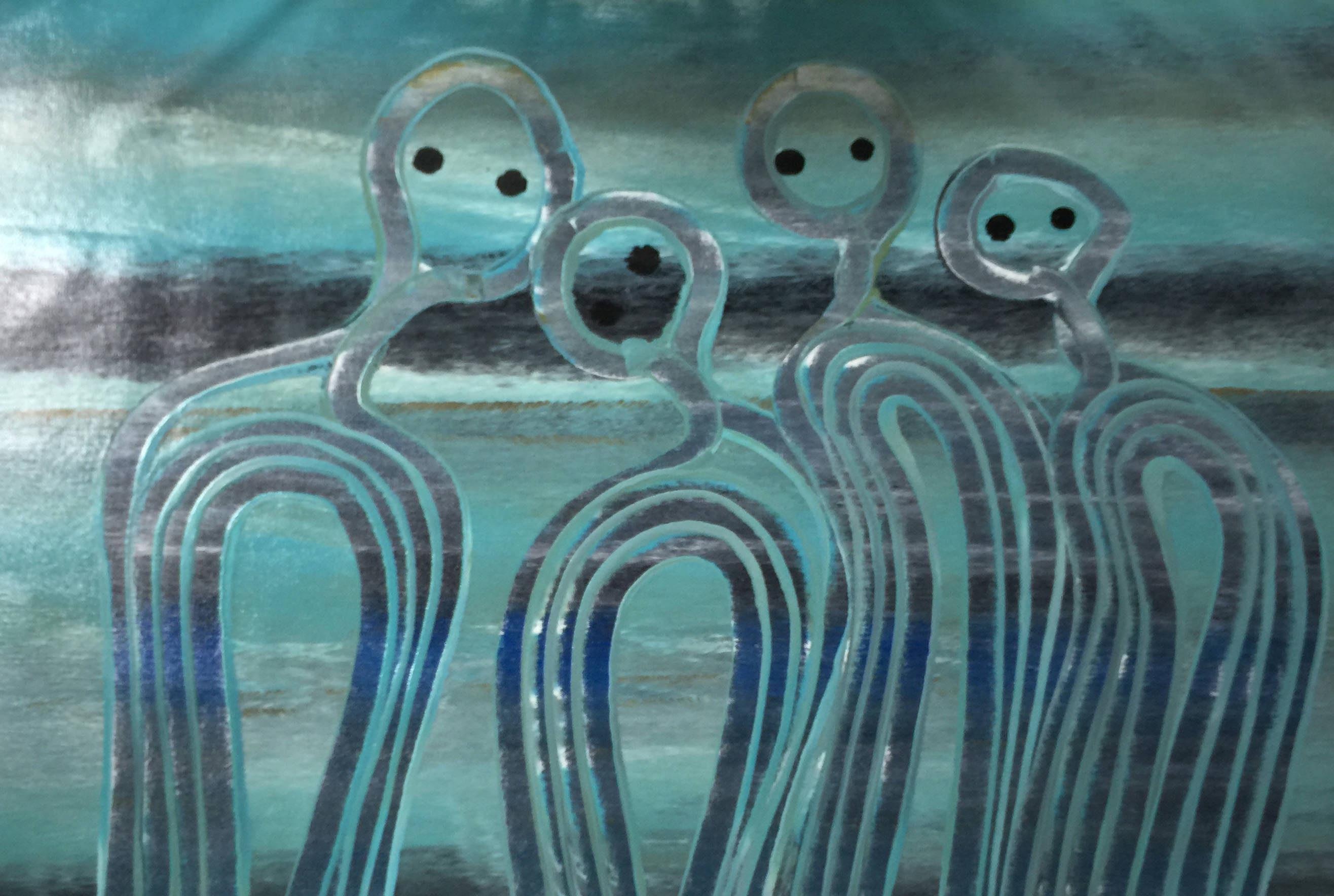 Fiona appeared on the contemporary art scene in the late 1990s as part of ‘The Art Gang’ – first exhibiting her work in 1998. She had her first solo show in 2001 in Broome, Western Australia. Fiona’s work was featured in Story Place: Indigenous Art of Cape York and the Rainforest at the Queensland Art Gallery in 2003.
Fiona appeared on the contemporary art scene in the late 1990s as part of ‘The Art Gang’ – first exhibiting her work in 1998. She had her first solo show in 2001 in Broome, Western Australia. Fiona’s work was featured in Story Place: Indigenous Art of Cape York and the Rainforest at the Queensland Art Gallery in 2003.
The Quinken figures found in Sandbeach rock art dominate Fiona’s art and reveals the Lockhart River Mob’s new thinking about traditions and conventions; how Indigenous Australian cultural traditions are regenerated and renewed. Fiona is very skilled in conveying how the past is embedded in the present, with many of her figures appearing to emanate from the stream of life running behind them. In other examples of her work, the Quinken figures are inverted; suggesting that the past generations exist amidst their descendants in the present.
Fiona’s work has been widely exhibited in Australian galleries since winning her first art award in 2001, and she has had 14 solo exhibitions and over 40 group exhibitions, as well as being represented in many private and public collections including the National Gallery of Victoria and QUT Art Museum.
SAMANTHA HOBSON
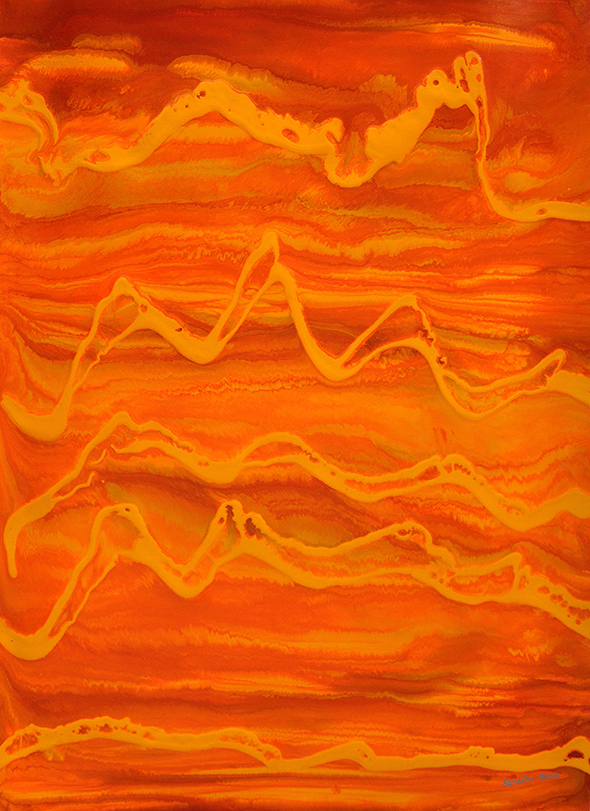 Samantha’s first solo show was at Andrew Baker Art Dealer in Brisbane in 2000 and has had regular solo exhibitions since. She was awarded second prize for painting and second prize for works on paper at the 2001 Laura Festival. Her work was prominently featured in Story Place: Indigenous Art of Cape York and the Rainforest at the Queensland Art Gallery in 2003 and in Contemporary Encounters at the National Gallery of Victoria in 2010.
Samantha’s first solo show was at Andrew Baker Art Dealer in Brisbane in 2000 and has had regular solo exhibitions since. She was awarded second prize for painting and second prize for works on paper at the 2001 Laura Festival. Her work was prominently featured in Story Place: Indigenous Art of Cape York and the Rainforest at the Queensland Art Gallery in 2003 and in Contemporary Encounters at the National Gallery of Victoria in 2010.
Samantha has an incredible ability to capture the colour and intensity of a moment and transform its radiant energy into an emotional charge pulsating through the artwork. Hot Hot Day transports you an exhaustive topical heat wave, while Cyclone Yasi captures the uncontrollable force of the very powerful and destructive tropical cyclone that hit North Queensland in 2011.
Art Historian Sally Butler perfectly explains her work as “close to abstract expressionism, but there is always something that keeps it in touch with visible reality. This is because her art is about seeing the world, not a way of imagining it”
Samantha has an extensive list of solo and group exhibitions, as well as being acquired by a number of private and public collections including the National Gallery of Australia, Canberra, the National Museum of Scotland, Queensland Art Gallery, and the The Kluge-Ruhe Aboriginal Art Collection of the University of Virginia, USA.
SILAS HOBSON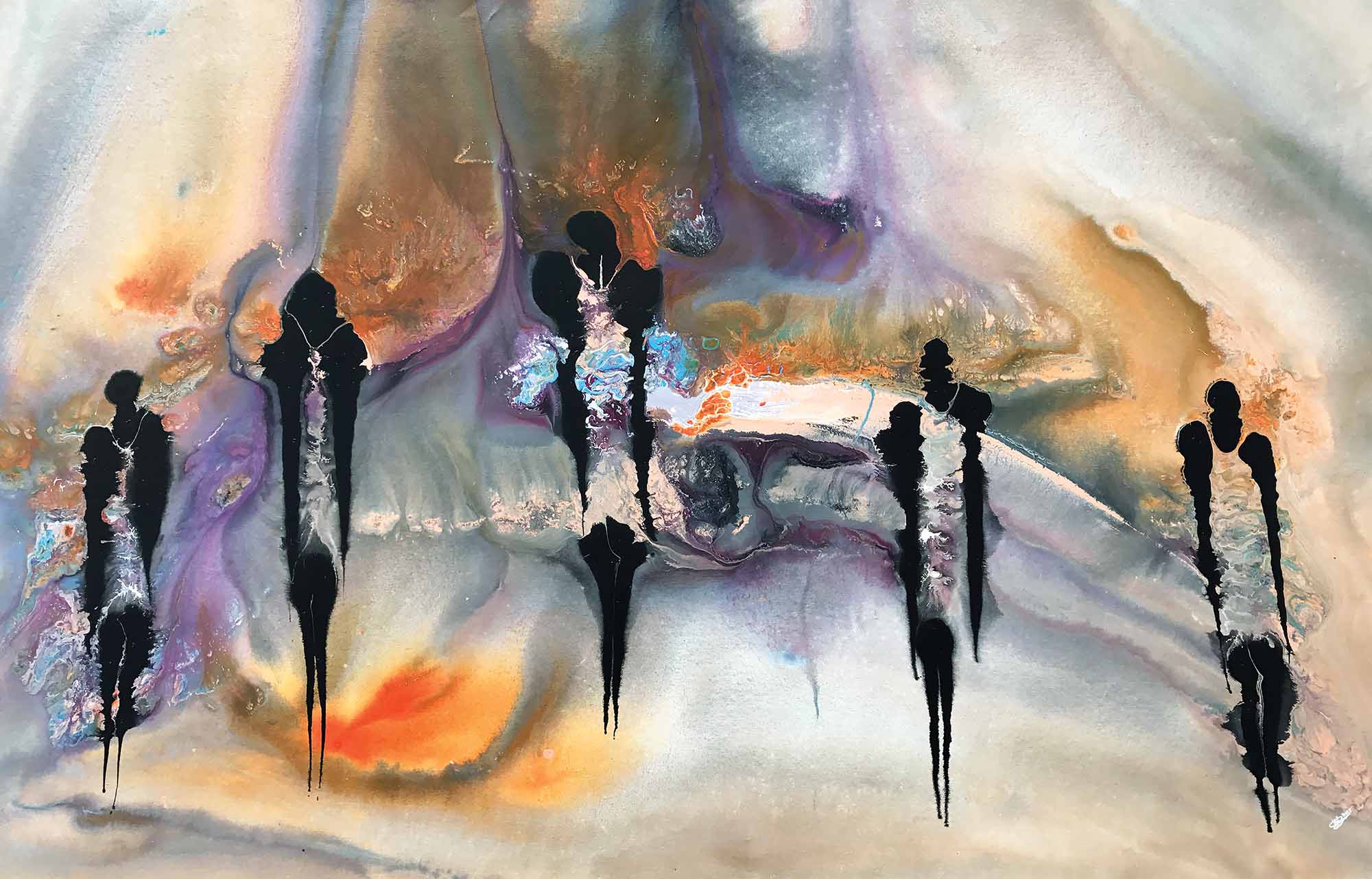
Silas Hobson started painting in 1996 and is a member of The Art Gang. His first solo exhibition was in 2002 in Brisbane and since then has exhibited extensively throughout Australia in solo and group exhibitions.
Many of Silas’ figures drift between states of human and supernatural appearance – floating above a repetitive wave of colour which gives the works a syncopated beat. Silas’ art captures the energy of dance and ceremony. Silas explains that a lot of his work is about coming together.
A large number of solo and group exhibitions including Silas’ artworks have been displayed around Australia and internationally, including exhibitions in Italy, France, the UK and the United States. His work hangs in the National Gallery of Australia, the Art Gallery of NSW, the Queensland Institute of Technology Odgeroo Collection, the Flinders University Collection, the ATSIC Permanent Collection, the Wollongong University Permanent Collection and the Queensland Art Gallery. Silas also has an impressive list of awards and fine art workshops to his CV.
IRENE NAMOK
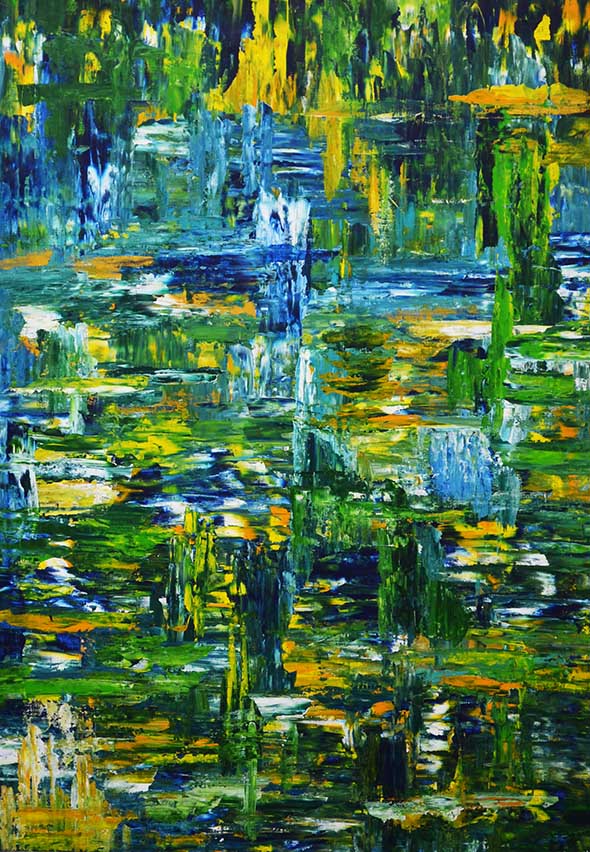 Irene Namok is not one of the founding ‘Art Gang’ members, but she carries on the Lockhart River mob’s approach to art making; negotiating one’s inherited traditions on one’s own terms in distinctive and innovative ways. Interestingly, Irene is the mother of Rosella Namok, which further emphasises that the Lockhart River Art movement originated from the younger generation. Although she came to painting later in life she has already received much acclaim. Her very first series of nine works sold out as part of a group Lockhart River exhibition at emerge ART SPACE in 2009 in Perth and she is becoming highly sought after.
Irene Namok is not one of the founding ‘Art Gang’ members, but she carries on the Lockhart River mob’s approach to art making; negotiating one’s inherited traditions on one’s own terms in distinctive and innovative ways. Interestingly, Irene is the mother of Rosella Namok, which further emphasises that the Lockhart River Art movement originated from the younger generation. Although she came to painting later in life she has already received much acclaim. Her very first series of nine works sold out as part of a group Lockhart River exhibition at emerge ART SPACE in 2009 in Perth and she is becoming highly sought after.
Irene usually depicts emotional responses to the beautiful views and lookouts at Sandbeach, as well as her favourite fishing spots. Her paintings are a rich interplay of texture and colour, evoking the feelings of her subject matter and fascinating the viewer with seemingly endless depths and layers.
Irene has participated in many successful solo and group exhibitions including exhibitions at the Booker Lowe Gallery in Texas USA (2010) and Redot Fine Art Gallery, Singapore (2014).